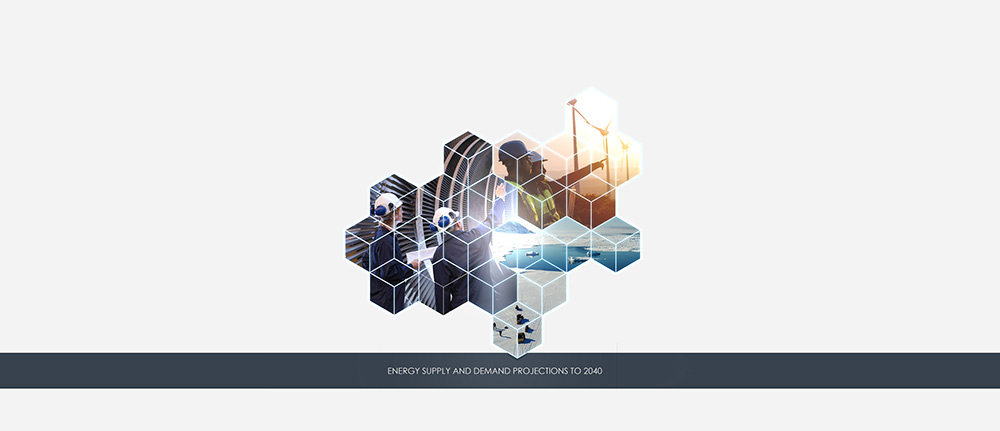Energy Information
The NEB collects, monitors, analyzes and publishes information on energy markets and supply, sources of energy,and the safety and security of pipelines and international power lines.
The NEB plays a vital role in conveying objective and neutral information to Canadians and is at the forefront on energy markets monitoring and analysis. Staff work feeds into regulatory hearings on pipeline projects in Canada, provides analysis on important policy developments, models Canada’s energy supply and demand projections, and provides Canadians with reports and dashboards to help make informed choices on energy matters.
Our Commitment
Canadians have access to and use energy information for knowledge, research and decision making.
Canadians have access to community–specific NEB–regulated infrastructure information.
Canadians have opportunities to collaborate and provide feedback on NEB information products.
Energy Information Products and Reports in 2018-19:
-
 69
69
Energy information online products -
 105
105
Collaborative engagements with energy stakeholders -
 274
274
Information request responses -
 >1M
>1M
Energy Information web page views -
 50%
50%
NEB Tweets are about Energy Information
Performance Results – Energy Information
Number of times NEB energy information is accessed.
- Target 750,000
- Results
2017-18 986,347 - Results
2018-19 1,216,873
Increased information specific to National Energy Board–regulated infrastructure in communities.
- Target 5new
datasets - Results
2017-18 5 - Results
2018-19 15
Percentage of surveyed web users who agree that energy information is useful for knowledge, research or decision making.
- Target 75%
- Results
2017-18 84% - Results
2018-19 90%
Number of opportunities that Canadians have to collaborate and provide feedback on energy information products.
- Target 42
- Results
2017-18 76 - Results
2018-19 105
The NEB’s Energy Information program is instrumental in supporting energy literacy across many platforms, and in conveying the role and the work of the NEB to a broader public. We collaborate with Natural Resources Canada, Statistics Canada, academic and global policy organizations who use the NEB’s energy data, data modelling, and integrated analysis as a part of their own energy information publications.
In addition, the NEB publishes a portfolio of publications on energy supply, demand and infrastructure as part of the NEB’s ongoing market monitoring and assessment of Canadian energy requirements and trends, including:
- Canada’s Energy Future
- Provincial and Territorial Profiles
- Commodity Prices and Trade Updates
- Energy Quizzes
- Market snapshots
- Canada’s pipeline system portal – Pipeline profiles, interactive pipeline maps, and pipeline transportation system

Canada’s Energy Future 2018: Energy Supply and Demand Projections to 2040
The NEB has been producing energy outlooks for over 50 years. Now, the pace of change in Canadian and global energy markets, policy, and technology trends means that the need for timely analysis is greater than ever. Canada’s Energy Future 2018: Energy Supply and Demand Projections to 2040 is the only publicly available long-term Canadian outlook that provides data and analysis on all energy commodities and all provinces and territories.
The publication explores how possible energy futures might unfold for Canadians over the long term. NEB energy analysts use economic and energy models to make projections based on certain sets of assumptions given past and recent trends.
The report’s baseline outlook is the Reference Case, which is based on a current economic outlook, a moderate view of energy prices, and includes climate and energy policies similar to those announced at the time of analysis. The Technology Case explores what Canada’s energy future might look like with greater climate policy ambition, innovation and technology adoption. The report also includes cases with higher and lower commodity prices to examine price uncertainty.
The NEB’s economists and technical staff engaged many different stakeholders in discussions on the future of energy in Canada during the creation of the report. This included federal government partners, provincial governments, and other energy experts across Canada, as well as international experts from groups including the International Energy Agency, the U.S. Energy Information Administration, and participants of the Energy Modeling Forum.
Western Canadian Crude Oil Supply, Markets, and Pipeline Capacity and Optimizing Oil Pipeline and Rail Capacity out of Western Canada
In November 2018, the Minister of Natural Resources, The Honourable Amarjeet Sohi, wrote to the NEB to seek advice on options to further optimize pipeline capacity out of western Canada. The request, which fell within the Board’s advisory duties under Part II of the NEB Act, came as a response to the growing price differential for Canadian crude in the latter part of 2018 and its impacts on Canada. Minister Sohi requested insight on three specific questions:
- Is the current monthly nomination process to access available capacity on oil pipelines functioning appropriately, consistent with the “common carrier” provisions of the NEB Act and efficient utilization of pipeline infrastructure?
- Are there other impediments to the further optimization of pipeline capacity?
- Are there short-term steps to further maximize rail capacity?
In developing our report for the Minister, the NEB met with pipeline companies, producers, shippers, governments, other regulators and experts to seek input on the questions in the Minister’s letter, and hosted an online forum on our website.
The NEB released the background information of our response to the Minister as a public report entitled Western Canadian Crude Oil Supply, Markets, and Pipeline Capacity in December 2018. The Minister received the formal report in February 2019, and at his request, we released Optimizing Oil Pipeline and Rail Capacity out of Western Canada – Advice to the Minister of Natural Resources in March. The reports described how space is allocated on pipelines in Canada, and offered insight into the imbalance between supply and capacity to move crude oil to markets and factors that have contributed to a wider discount, or differential, for Canadian crude oil.
Exploring Energy Futures – for Students
Through our Energy Information program, the NEB continually strives to make neutral, high-quality energy analysis and information available to all public audiences. In 2018-19, the NEB partnered with Ingenium: Canadian Museums for Science and Innovation to create a lesson plan for high school students that teaches them about energy in Canada. It is based on the NEB’s Energy Futures work and uses the Explore Canada’s Energy Future interactive data visualization tool.
The lesson plan is designed to encourage students’ own observations about why provinces generate and consume electricity differently, provide students with the tools to engage in important conversations about energy in Canada, and increase their energy literacy. It also contains four activities, supported by two infographics developed by the Canadian Geographic Society.
This project is a new opportunity for the NEB to provide energy information to a youth audience, supporting knowledge about and interest in Canadian energy. The lesson plan was completed and released in October 2018 and a Part Two is scheduled for release in 2019, with material that is specifically tailored to Indigenous students and educators.
Centralizing Energy Data: Canadian Energy Information Portal
There are many organizations and sources that collect and maintain national energy data, which can make finding particular types of information challenging. The NEB has collaborated with Natural Resources Canada, Environment and Climate Change Canada, and Statistics Canada on a project to centralize all national energy data in a single online space. This portal provides Canadians with a single point of access to a wide variety of statistics and measures of the country’s energy sector. The portal offers an array of information on topics such as energy production, consumption, international trade, transportation and prices.
The portal also features an interactive dashboard that provides a comprehensive picture of the Canadian energy sector, with a focus on monthly and provincial usage.
The initiative will benefit anyone interested in obtaining data on energy who may not have prior knowledge of where or how to find that information, and create a more efficient mechanism for both the NEB and members of the public who regularly use energy data.
The NEB collaborated with the International Energy Agency (IEA) on an innovative Clean Technology Scenario report. The report shows that CO2 emissions from Canadian buildings could be 80% lower by 2050, with major energy improvements and shifts away from fossil fuels to low-carbon energy sources. NEB employees released the findings of the report with attendees at the Clean Energy Ministerial (CEM) in Vancouver. The CEM is a high-level global forum that promotes policies and programs to advance clean energy technology to share lessons learned and best practices, and encourage the transition to a global clean energy economy.


